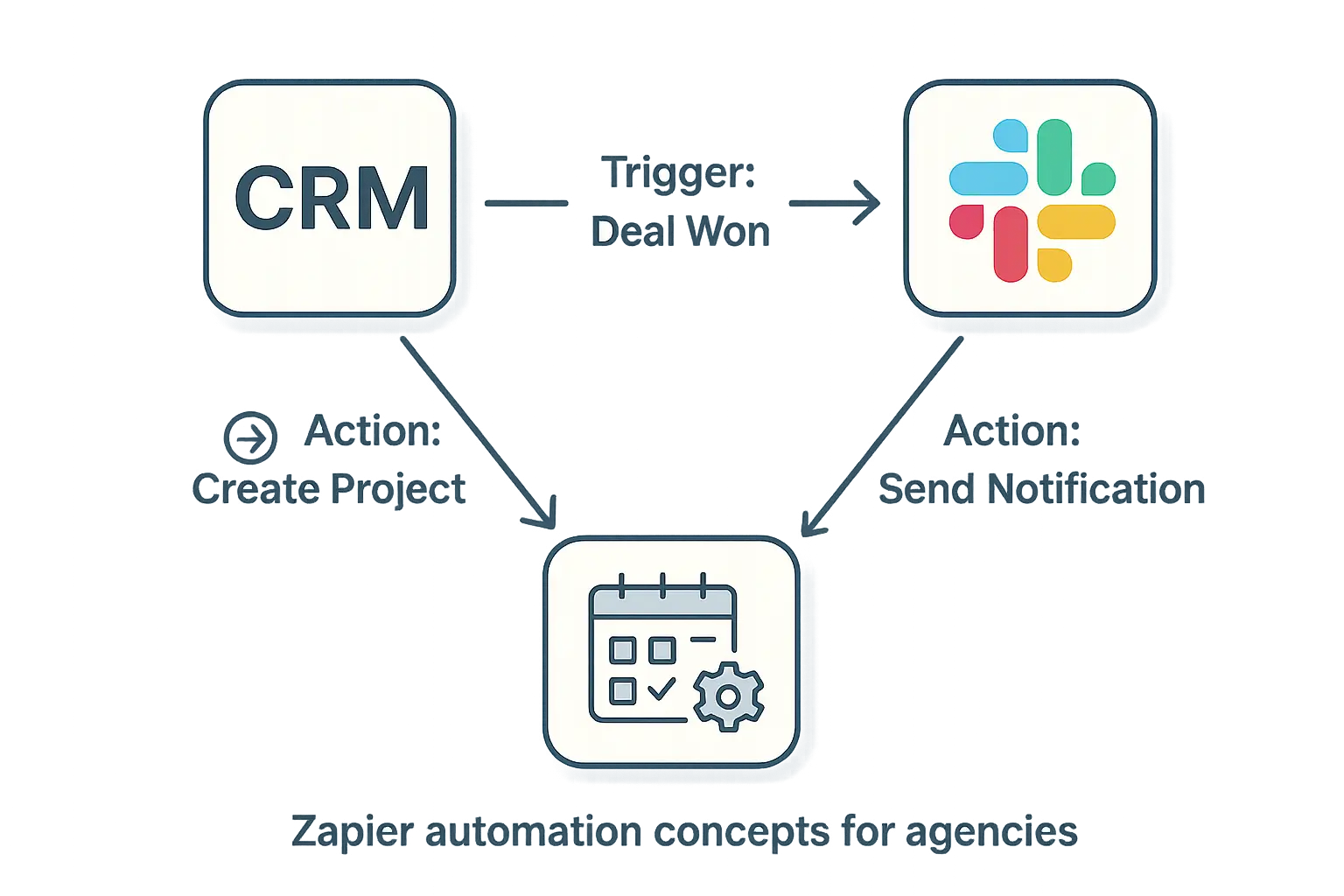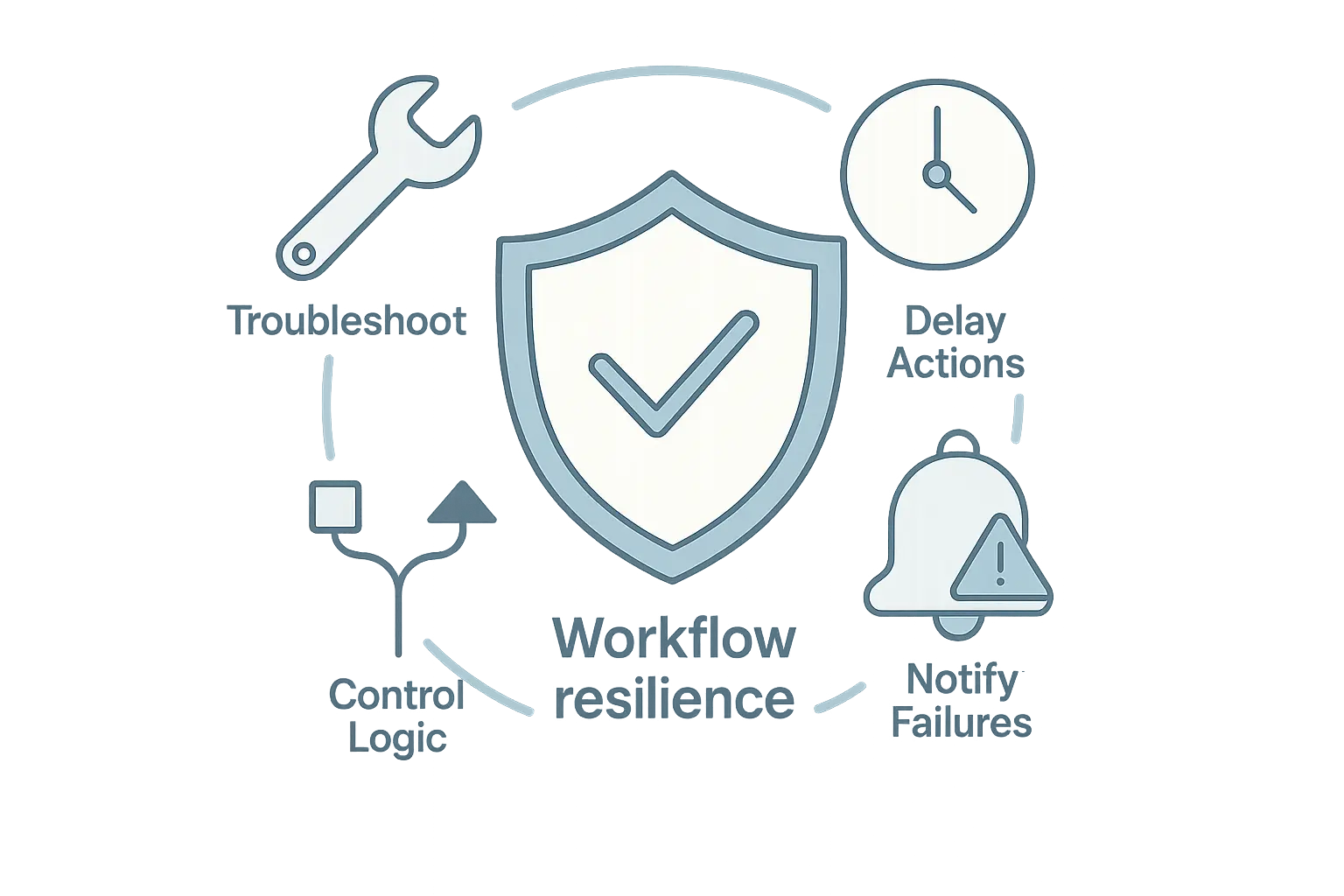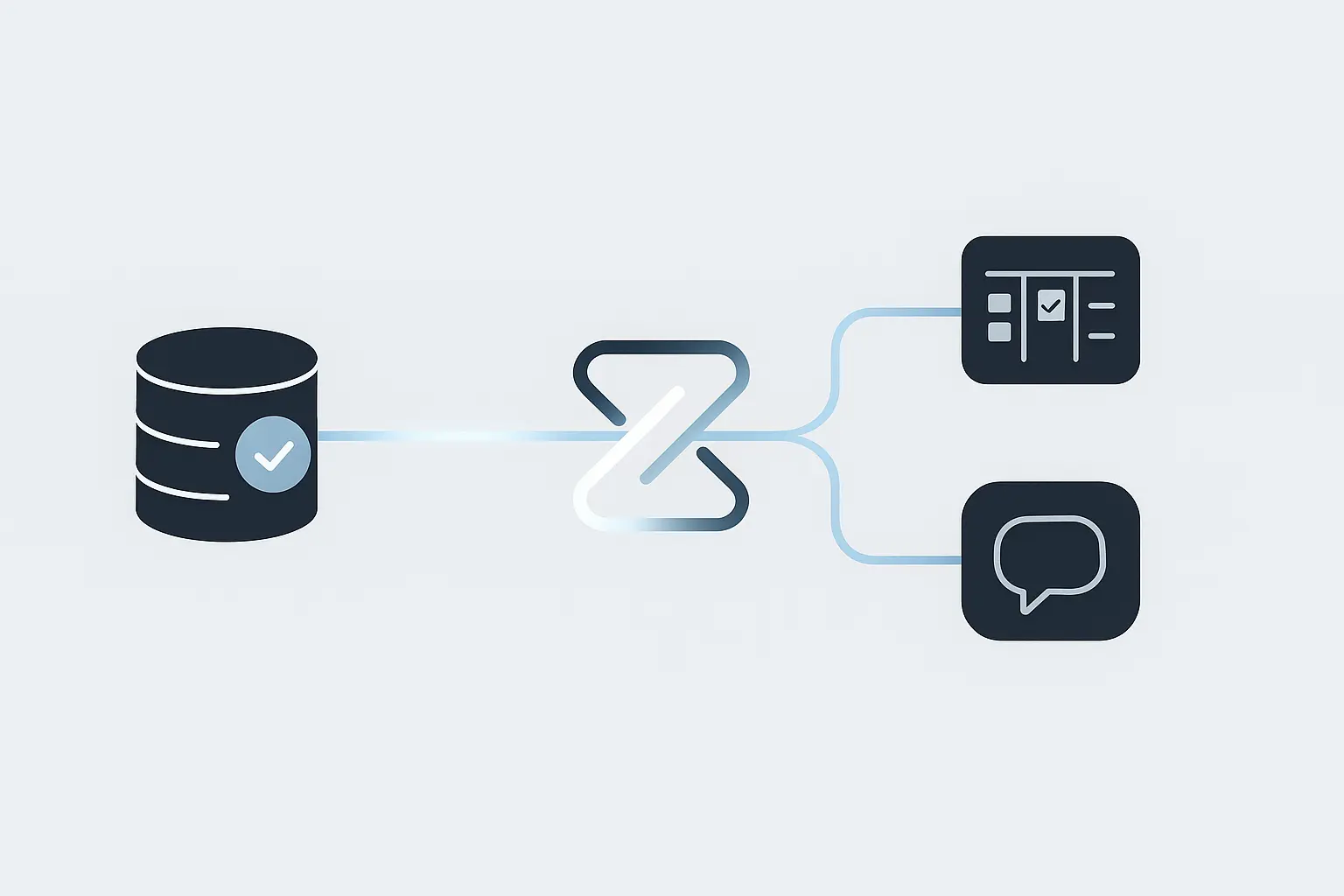That glorious “deal won” notification hits your inbox. For a second, there’s a rush of excitement. Then, a different feeling creeps in: that low-grade dread of the manual work to come.
You have to copy-paste the client’s name and contact info into your project management tool. You need to create a new Slack channel and email your team—and your fulfillment partner—with the project details, hoping you don’t forget a critical piece of information.
Someone has to set up the client folder in Google Drive. And the onboarding checklist? It’s a long series of manual tasks, assigned one by one.
What if all of that could happen automatically, in the 15 seconds it takes Zapier to run a workflow?
This isn’t about futuristic robots; it’s about creating intelligent, automated systems that free your team to focus on what truly matters: strategy, creativity, and client results. Welcome to your masterclass in agency automation.
The Hidden Tax of Manual Work
As an agency leader, you’re constantly fighting the clock. But the biggest thief of your team’s time isn’t client calls or strategic planning—it’s the relentless hum of repetitive, manual tasks. The data paints a stark picture of a problem many agencies feel but rarely quantify.
Research shows that over 40% of workers spend at least a quarter of their week on manual, repetitive tasks. For an agency, that’s time that could be spent optimizing a campaign, building a client relationship, or developing a new service offering. It’s a massive opportunity cost hiding in plain sight.
It’s not just about lost time; it’s about burnout. A staggering 90% of knowledge workers feel burdened by boring, repetitive work. When your best minds are stuck with data entry, it drains their creative energy and leads to disengagement.
That’s where automation comes in. In fact, 59% of managers believe that if the manual aspects of their job were automated, they could save six or more hours a week. Imagine what your agency could do with that reclaimed time. This isn’t just a “nice-to-have”—it’s a critical competitive advantage.
Your Agency’s Automation Toolkit: The Core Three
To build our workflow, you only need three types of tools you’re likely already using. The magic is in connecting them.
Your CRM (Customer Relationship Management)
This is your agency’s source of truth for all client data. Think HubSpot, Pipedrive, or Salesforce. It’s where a prospect officially becomes a client.
Your PM (Project Management) Tool
This is your delivery engine. It’s where the work actually happens. Think Asana, ClickUp, Trello, or Monday.com.
The “Digital Glue” (Zapier)
Zapier is an automation tool that acts as a bridge between more than 5,000 different web apps. It works on a simple but powerful principle: “When this happens (Trigger), do that (Action).”

Blueprint: The “Deal Won” to Project Kickoff Zap
Let’s build the ultimate workflow that triggers the moment a deal is marked as “Won” in your CRM.
The Trigger: “Deal Won” in Your CRM
Everything starts here. In your CRM, you have a sales pipeline with different stages. The final stage is typically “Closed Won.” Our Zapier workflow, or “Zap,” will be configured to watch this stage.
The Trigger: When a deal in HubSpot (or your CRM of choice) is moved to the “Closed Won” stage.
This is the starting pistol. The moment your sales team celebrates the win, the entire operational machine kicks into gear instantly. No delays, no forgotten steps.
Action 1: Create a New Project in Your PM Tool
Manually setting up a new client project is slow and prone to error. With automation, it’s flawless.
Once the trigger fires, Zapier pulls all the relevant data from the CRM deal—client name, company name, contact email, services purchased, deal value, etc. It then immediately uses this information to perform its first action:
The Action: Create a new project in Asana from a pre-defined template.
Using a project template is the key. Your template can already contain your standard phases, milestones, and task lists for a new client. The Zap simply populates the project details (like the project name and description) with the client’s information from the CRM.

Action 2: Populate Onboarding Tasks and Assign to Your Team
A project shell isn’t enough. The next step is to create and assign the specific, actionable tasks needed for a smooth client kickoff. Your Zap can continue with a series of actions:
- Create Task: “Schedule Kickoff Call” and assign it to the Account Manager.
- Create Task: “Send Welcome Packet & Onboarding Questionnaire” and assign it to the Project Manager.
- Create Task: “Request Access to Google Analytics & GSC” and assign it to the SEO Specialist.
This ensures that accountability is established immediately. Your team knows exactly what they need to do, and nothing falls through the cracks.
Action 3: Notify Your Team (and Your SEO Partner) in Slack
The final piece is communication. Email chains are messy and inefficient. A centralized Slack notification ensures everyone is on the same page instantly.
The Action: Post a custom message to a specific Slack channel (e.g., #new-clients).
This message can be dynamically populated with information from the CRM, creating a clear, at-a-glance summary:
New Client Won!
Company: Oceanic Solutions
Primary Contact: Jane Doe (jane.doe@oceanicsolutions.com)
Services: SEO Retainer – Growth Tier
Next Steps: A new project has been created in Asana. Please review your assigned onboarding tasks!
This is also the perfect way to integrate a white-label partner. If you work with an external team for fulfillment, the Zap can post this notification in a shared Slack channel. Your partner gets all the info they need to begin their work, making them feel like a seamless extension of your in-house team.

Why This Matters for Scaling Your Agency
For an agency, especially one offering specialized services, consistency is the foundation of quality and profitability. An automated onboarding process ensures that every client receives the same high-quality experience from day one.
When you’re running a complex campaign that includes a deep technical SEO audit, you can’t afford to miss a step. Automation codifies your best practices into a system, turning your operational expertise into a repeatable, scalable asset.
Furthermore, if you’re looking to expand your offerings by providing agency SEO services through a partner, this kind of workflow is non-negotiable. It allows you to plug a fulfillment partner directly into your operations with zero friction, ensuring they have what they need to deliver results under your brand.
Frequently Asked Questions (FAQ)
Is Zapier difficult to learn?
Not at all. Zapier is designed for non-technical users. Its interface is intuitive, and if you can understand “if this, then that” logic, you can build powerful Zaps in minutes.
Is an automation tool like Zapier expensive?
Zapier has free and paid plans. When you consider the return on investment, the cost is minimal. Think back to the research: if you can save your team just six hours a week, a paid Zapier plan pays for itself many times over in recovered productivity and reduced operational errors.
What if my agency’s tools don’t connect to Zapier?
With over 5,000 supported apps, chances are the major CRM, PM, and communication tools you use are already on Zapier. From HubSpot and Asana to Google Sheets and Slack, the ecosystem is vast.
Will this automation replace people on my team?
No. It empowers them. Automation handles the tedious, repetitive work, freeing your team to focus on the high-value tasks that require human intelligence: building client relationships, developing creative strategies, and interpreting complex data to drive results.
Your First Step to a More Automated Agency
Workflow automation isn’t a luxury reserved for large corporations. It’s an accessible, powerful strategy that any agency can use to become more efficient, scalable, and profitable. By connecting your CRM, PM tool, and partners, you create a seamless operational flow that eliminates manual work and sets every new client engagement up for success.
Your journey starts with one small step. Look at your current client onboarding process. Map it out, identify the biggest bottleneck, and build your first Zap to solve it. You’ll be amazed at the impact.

